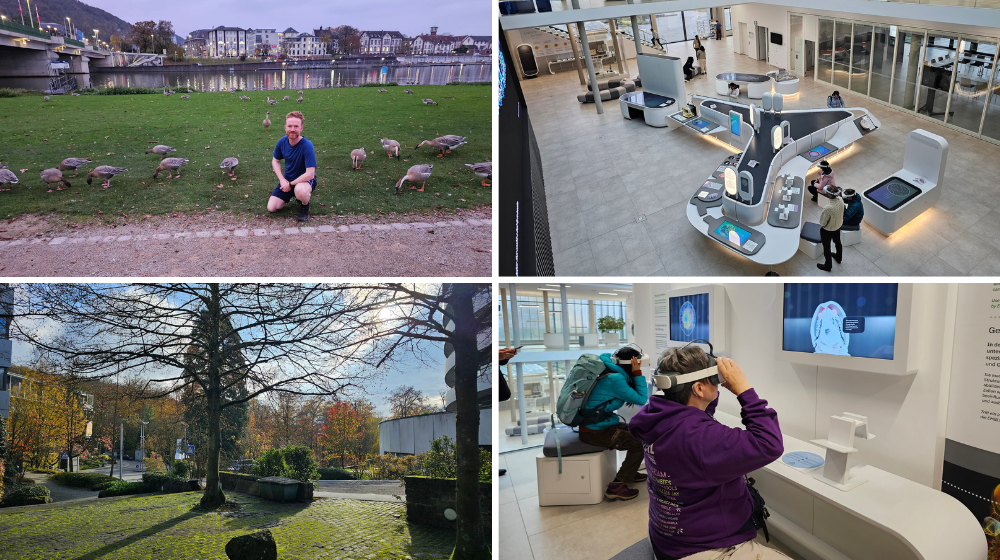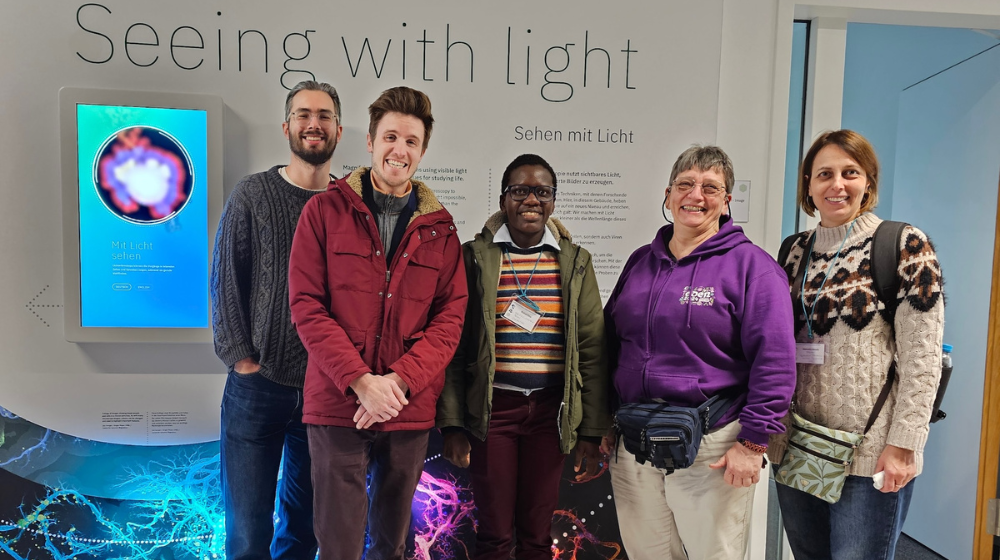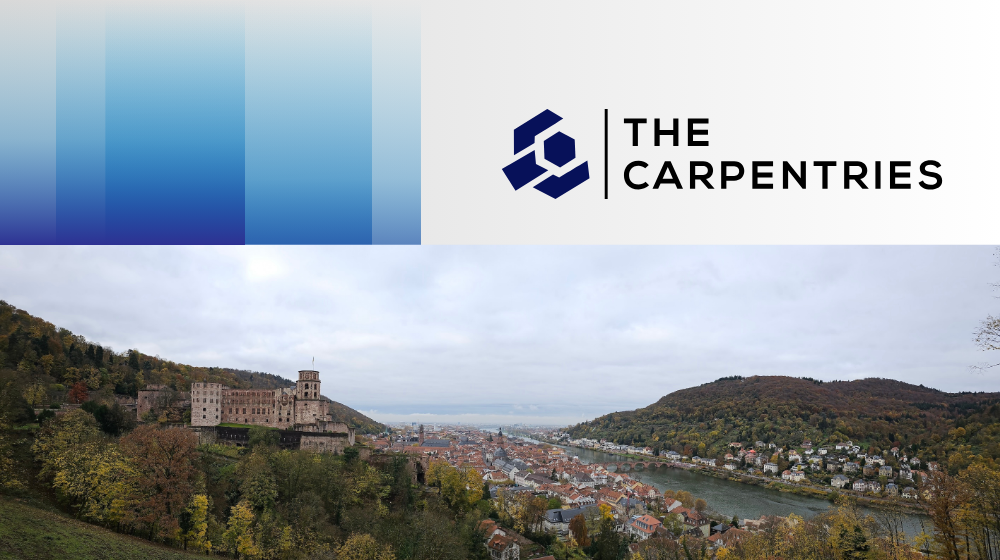Panorama of Heidelberg castle and old town. Photograph by Phil Reed.
From 12 to 14 November 2024, I attended the joint BioNT and The Carpentries event titled ‘CarpentryConnect Heidelberg 2024’. Participants travelled from all over Europe for this conference and mini hackathon, with one keynote speaker flying in from South America. In this blog post, I will look at the presenters with UK connections, the keynote presentations, sharing my thoughts and highlights, then look ahead at what is next for the community of research software trainers. Thank you to BioIndustry 4.0 who funded my travel. I presented some of these reflections at the UK monthly Carpentries call on 17 December 2024.
About the host

Photos of EMBL campus and Heidelberg city.
The event took place at EMBL (European Molecular Biology Lab) in the city of Heidelberg in Germany and was hosted by BioNT (Bio Network for Training). BioNT is a collective that empowers digital skills in life sciences, particularly working with biotech and biomedicine SMEs, and everyone is welcome. They have provided quality training and community development with over 10 years of Carpentries activity. My travel founder was BioIndustry 4.0 who are revolutionising technology for a sustainable future and I'm very grateful for their support.
Many presenters with UK connections
Seven of the presenters had UK connections:
- Malvika Sharan (Turing Institute, OLS) gave the first keynote presentation.
- Matthew Bluteau (UK Atomic Energy Authority) co-hosted a hackathon project and presented a poster.
- Aleksandra Nenadic (SSI), Jannetta Steyn (Newcastle University) and Samantha Ahern (UCL) each co-hosted a hackathon project, workshops and breakout sessions.
- I presented a lightning talk.
These presenters (and the other UK attendees) played an important role in the overall engagement and delivery of the event.
My highlights and discussion points
In Malvika Sharan’s keynote (Carpentering Communities), Malvika spoke about lessons learned from working with communities in open science. Throughout these lessons, she considered two concurrent aspects: community and community management. In other words, there are different lessons to learn if you are a member of a community as opposed to being a manager or organiser of a community. A lesson which stood out for me is “clarity is kindness”; where ‘clarity’ means different things to different people. As community members, when new ideas merge, we must be strategic about where we put our time. As community managers, the focus is different; for example, we should set up clear processes for on- and off-boarding members.
Hugo Gruson (data.org) described how the Carpentries Workbench (latest lesson template) is being used in other communities already, including universities and businesses on both sides of the Atlantic. He found it tricky to identify all these users since there is no registry or requirement for people to share their intentions when they fork the open-source code. I have observed equivalent concerns with my work when we wish to audit or communicate with everyone who has adapted our team’s code. It was helpful to hear Hugo’s approach to the problem.
The third keynote speaker was Yanina Bellini Saibene (rOpenSci, LatinR).
Yanina spoke about her experience of building connections through community participation. She mentioned how she applied the CSCCE Community Participation Model which describes four modes of member engagement that can occur within a community. These modes are: convey/consume, contribute, collaborate, and co-create. I will take some more time to study this model to see how it could improve my own work.
Sarah Kaspar (EMBL) led a breakout session looking at tools for creating training materials, whether the materials are for Carpentries-related work or otherwise. We discussed how there is much overlap between the tools and their applications, there is no one-size-fits-all solution. We created a shared list of free products to create scalable vector graphics (SVG) that can be used in documentation, illustration and web design. I have since used one of these (draw.io) in documentation I maintain for the ELIXIR TeSS platform.
Prosperity for early 2025

Participants enjoying a visit to the EMBL exhibitions.
All of the mini hackathon projects progressed, not always in the ways that people anticipated. Most relevant to the SSI are the materials being developed regarding lesson translation and how to develop intermediate level training. Several community events are planned in the coming weeks and months, relating to the activity in Heidelberg. For example, there are community calls in January 2025 for how to move Software Carpentry forward, and there are monthly calls for progressing CarpentriesOffline and miniHPC. Details can be found in my December 2024 UK Carpentries presentation, slide 7.
Conclusions
I could see from attending CarpentryConnect that The Carpentries community is maturing, its priorities are adjusting since I was first involved in 2018. The scope is expanding but the core message remains true. I made more connections than I expected relating to my core job; I am a Research Community and Training Manager, mostly facilitating life sciences research data, tools and training. It was great to overlap with people I know through ELIXIR Europe, some of whom I had never met face-to-face.
I found inspiration on how to better run my own mini hackathons, events and other activities, experiencing how the CarpentryConnect sessions were so well organised and planned. Finally, I could see how there is no one-size-fits-all solution to many challenges yet we can still work together harmoniously and collaboratively.


